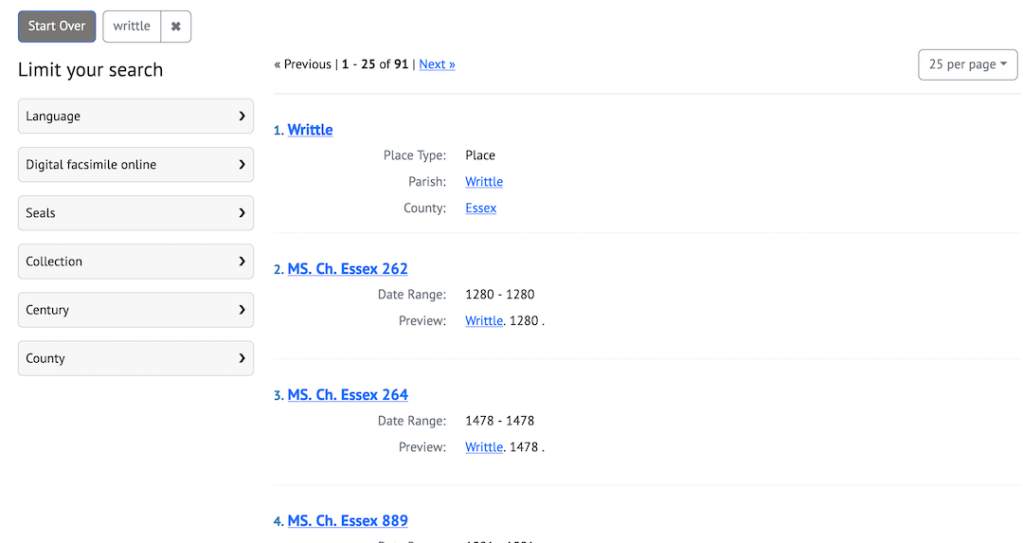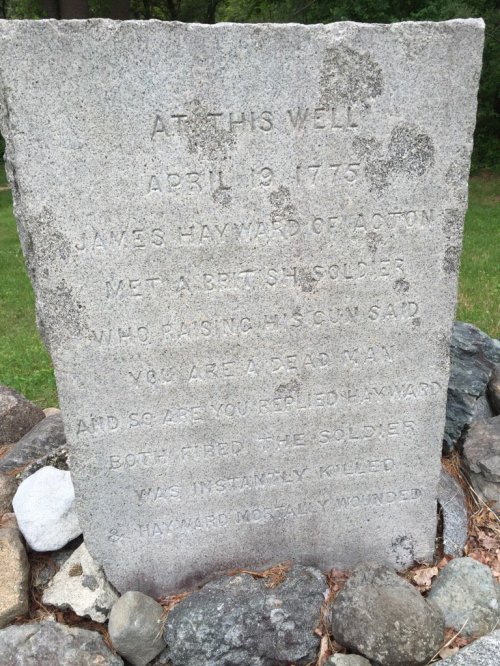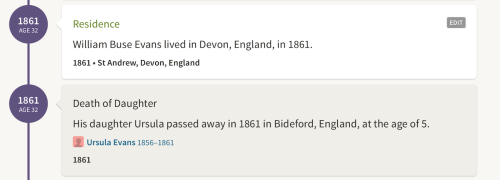Those of you that live in places where you bring individual trash cans to the curb have probably been in this situation before: One of your neighbors has taken their trash can(s) to the curb, and then another sees the curbside can(s) and does the same, and soon most of them have. You’re pretty sure that there was a holiday this week and that trash pickup has been delayed by one day. But the more people who bring their cans up, the more you start to wonder whether you’re correctly remembering. Perhaps you even double-check the calendar to make sure you are right. But in historical and genealogical research, there is no calendar to check. When the majority choose a different argument or interpretation from yours, you may find yourself looking for a signpost in the scholarly wilderness. People may write a piece disputing your research or contact you directly to express that your conclusions are inaccurate.
In researching historical events and people, none of us will ever know for sure what actually happened. The best we can do is come as close to accuracy as we can with the records and other resources available to us, reach our own interpretations and conclusions, and then always be willing to reexamine them if new records and/or research come to light. This makes research especially contentious, since even something as simple-seeming as an historical birth date can be up for debate.
“Truth is not a democracy”
The subheading is from a seminar I attended several years ago, and was the initial response when an audience member asked a question about when the majority disagrees with your conclusions. It’s a quip that has always stuck with me, because I have found over and over again that just because most people agree on something, that doesn’t necessarily mean it is the best interpretation of the evidence, nor that the others have necessarily reviewed all the records and other evidence that you have reviewed. When I’m contacted by someone who disagrees with my conclusions, my own starting point is usually: Can you please tell me your evidence for your position?
Take the case of the two Simeon Lymans as an example. Simeon Lyman the father was born circa 1718, probably in Northampton, Massachusetts, as his family was living there at the time. Simeon moved to Salisbury, Connecticut, around 1744, as he bought 85 acres on the “highway to Sheffield” from Joel Harvey in that year. In 1747, Simeon was officially admitted as a “resident” of the town of Salisbury according to the town meeting minutes, which included the ability to vote at town meetings. In January 1748/9 he followed these steps with the common next step of marriage. Like most New England families of this era, Simeon and his wife Elizabeth (Beebe) Lyman proceeded to have a lot of children; in their particular case, I have identified nine, including children named after each parent, again as was typical. Their nuclear family was shattered when Elizabeth died in 1773, on the eve of the Revolution. A little over a year later, a Simeon Lyman married an Abigail Chipman in Salisbury.
And this is where the controversy begins.
I had been as thorough as I could, and had also found that a Simeon Lyman had married a Joanna Palmer in 1780. Simeon Lyman the younger was born on 7 January 1754, meaning that he would have been 20 if he had married Abigail Chipman in 1774, and 26 if he married Joanna Palmer in 1780. Is it possible that Simeon the younger married Abigail and Simeon the elder (or some other Simeon) married Joanna? Of course. But it makes a heck of a lot more sense for the widower who still has children at home to remarry quickly and for the young man to wait until he’s a bit more established to marry. And that’s not even getting into the question of ages and how much more sense it generally makes for an older man to marry a woman relatively close in age to him (Abigail was born circa 1730) and a younger man to do the same, and indeed, the Simeon-Joanna pair proceeded to have children of their own. My initial theory was greatly bolstered by reviewing Joanna’s Revolutionary War widow’s pension file, in which affidavits clearly state that she married the younger Simeon.
This has been an extremely basic overview of time-consuming research that I feel is solid. Having noted that most posted research conflated Simeon’s two wives into a single wife (squashing the maiden name of his first wife and the given name of his second wife into a single wife, probably copied uncited from a compiled genealogy that had made the same error), I decided to put a basic sketch of my research on Simeon the elder online, not realizing at the time that it might be controversial beyond the conflated Abigail-Elizabeth question. And that’s when the emails began.
You’ve made a mistake, they said: Simeon the younger married Abigail.
The first time I got one, my initial response was (as usual) to go back over my research to see if I had made an error that was obvious to me. I was relieved when my review confirmed that my conclusions were, to me, solid conclusions based on extensive research and what I considered a preponderance of evidence. However, as I have mentioned, the nature of historical research means conclusions can always change depending on what evidence and research an individual researcher has viewed.
Consequently, I would respond, Can you please tell me your evidence?
They would usually respond, Ancestry. Could you please be more specific? And then I would usually get, U.S. and International Marriage Records, 1560-1900. This is an index-only database that is described by Ancestry thusly: “This database contains marriage record information for approximately 1,400,000 individuals from across all 50 United States and 32 different countries around the world between 1560 and 1900. These records, which include information on over 500 years of marriages, were extracted from family group sheets, electronic databases, biographies, wills, and other sources.” None of the entries specify what the exact source is for a marriage, but given that the entry for Simeon and Abigail claims that Simeon was born in 1755 and that Abigail was born in 1757, neither of which is true, I don’t think it is an unfair educated guess to speculate that a family group sheet created by a rather bad researcher is probably the source.
So then I was left trying to explain that I had done hundreds of hours of research on the family and popping a name into an Ancestry search box and coming back with an index-only result is not a substitute for that. Finally I added a note to my posted research that if anyone wanted to contact me disputing what I posted, to please present me with evidence from records, and that I don’t count an unsourced index-only database entry as a record. I wasn’t sure what would happen, but nobody has emailed me since I added that note.
As a final aside on the Lymans in case anyone reached this post through searching on the family, Simeon Lyman the younger carved the powder horn that J. L. Bell blogged about over on Boston 1775 in 2012.
Discovering a new path in the scholarly wilderness
Sometimes something very different happens and you find something that it appears no one else has previously found. Sometimes everyone is immediately accepting of and excited about it. But sometimes not.
Late last year Susan Moore was going through a 16th century record set in England on my behalf and sent me a report about it. I found something in it that I had never seen mentioned anywhere before and was initially taken aback. I first wrote to ask if Susan thought I was correctly interpreting it. Then I checked through published scholarship to see if I had missed its being mentioned, and I could not find a mention of it anywhere.
I am lucky enough to live in a location where I often interact in person with well-established scholars, and I happened to be somewhere with someone who has researched this shortly thereafter, and mentioned it with excitement. It went over like a lead balloon; the response was deep skepticism. After going back and forth about it in my mind a good deal, I decided to try talking to a second scholar before giving up, and their initial response was the same as mine had been – to check published scholarship to see if anyone had mentioned it previously. They could not find anything either. They then congratulated me on making what appeared to be a new find and suggested Susan and I keep plugging away at the research to see what else we could find. (I’m not really sure how I constrained myself from doing a little dance until I was alone.) I readily admit that if the second scholar had similarly reacted with skepticism, I probably would have stopped trying to talk to people about it, although I wouldn’t have given up on the research altogether. Make no mistake that it can be a little scary and/or somewhat intimidating to posit something different than what has been publicly posited before you. Since this experience, I have even more respect for people who have published pieces correcting or disputing previous published research.
I apologize for my vagueness in this part; I hope to be able to publish something about this after having completed further research, and don’t want to spill the beans publicly as a result.
Alone with the research trees
It can be hard to be the one person who doesn’t take your trash cans to the curb on the wrong day, even if you’ve checked the calendar and know that your neighbors have forgotten about a holiday. Similarly, it can be difficult to know that people vehemently disagree with your research, even if you know that your research is as good as it can be and have faith in your own interpretations. In my opinion, part of being a good researcher is being open to being wrong or to discovering new information, and also reviewing your research from time to time to see if your greater knowledge now leads you to question one of your earlier conclusions or realize perhaps there is something you missed reviewing because you did not know it existed at the time. It’s important to read the research of others and to collaborate with others, but it’s also important to remember that others are not necessarily going to agree with you and that this in and of itself doesn’t speak badly of either of you.









![[member of the Association of Professional Genealogists]](https://adventuresingenealogy.files.wordpress.com/2020/04/apgmemberlogocolor144x121.gif)
![[Progress Pride flag]](https://adventuresingenealogy.files.wordpress.com/2022/12/progress-pride-flag.png)